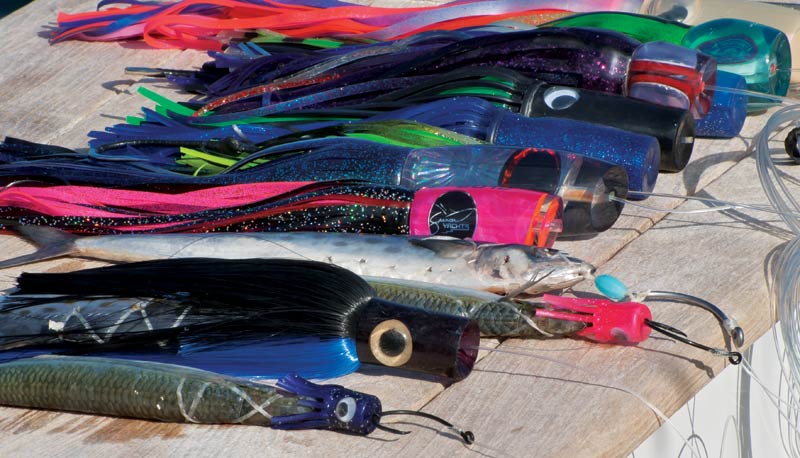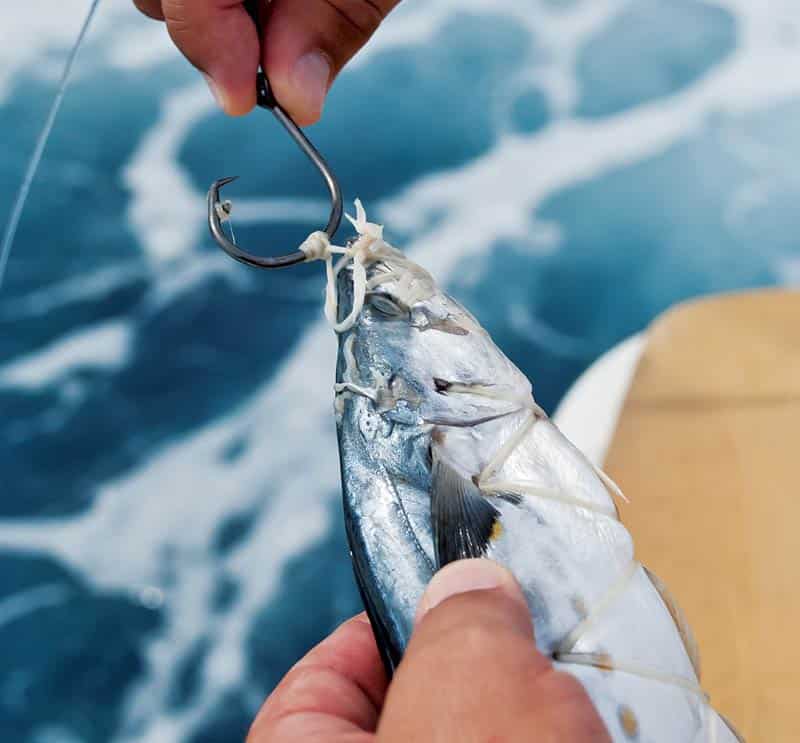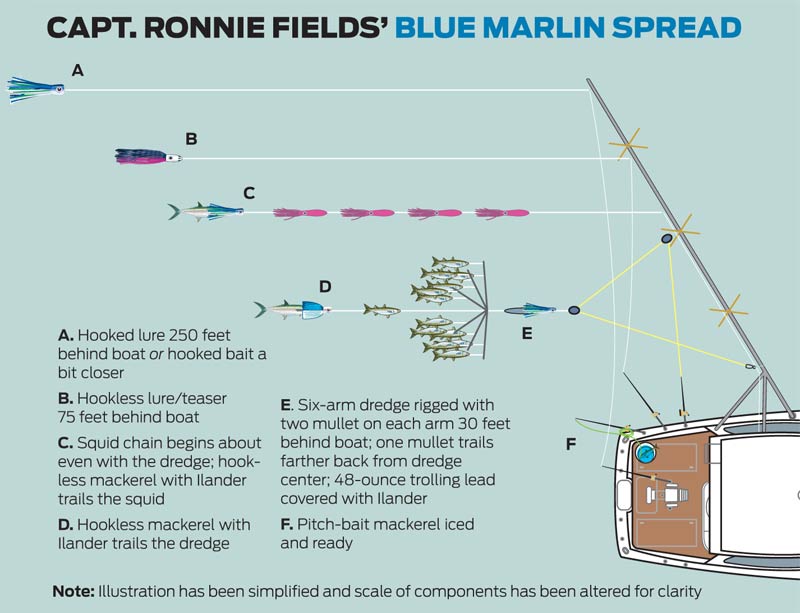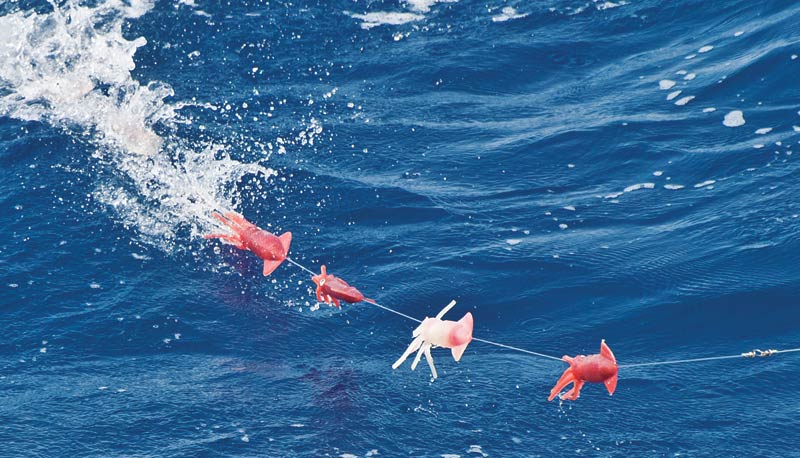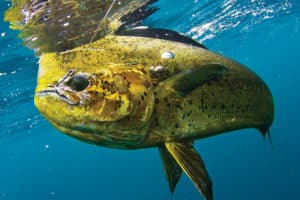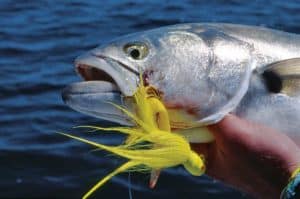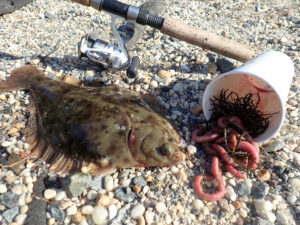Bait or plastic? The question has been debated since lures took hold 30 years ago.
“If you’re from Hawaii, you’re probably a lure fisherman,” says Ronnie Fields, captain of the 63 Scarborough Big OH based in Jupiter, Florida. “I grew up fishing Florida, the Carolinas and Maryland. That’s bait fishing, mostly for white marlin; blue marlin are a bonus.”
In 2009, Fields placed second in the St. Thomas July Open, pulling bait in his long riggers and a dredge — both methods were unusual in the Virgin Islands at the time.
Fields is definitely a bait man.
Or is he?
The following year he won the same St. Thomas tournament and placed second in the Atlantic Blue Marlin Tournament — with one significant change in strategy: pulling lures. Fields’ techniques are now common in St. Thomas.
Fields — one of those skippers who learns from each fish he catches — agreed to share some of his insight with Sport Fishing readers.
Averages Versus Numbers
“Averages are better with bait,” Fields says. “In St. Thomas that first year, I fished bait in my long riggers — horse ballyhoo with small Mold Craft Chuggers in front. But I don’t think bait works as well down there. The fish are more aggressive. A lure is bigger, it’s trolled faster and it’s got a lot of smoke bubbles behind it,” Fields says. “With lures, we missed some fish we would have caught on bait, but in St. Thomas, we got more bites because we trolled lures.”
Understanding the Bite
“If you see a striking fish’s head and shoulders out of the water, going away from the boat, you’ve got a good lure bite,” Fields says. “But if the fish comes up behind the lure playing with it, you’re not going to catch that fish. It’s going to snag the hook on its bill, pull some drag, come up windshield-wipering, then throw the hook and swim away,” he says.
As a mate aboard The Madam and The Hooker mothership expedition, Fields leaned toward lures because bait wasn’t easily obtained. “When we first got to the Cape Verde Islands, we didn’t know what to expect. The first day we trolled lures on heavy tackle and went 15 for 35 on blue marlin,” Fields says.
So they switched to hooked bait in the long-rigger clips and hookless bait for teasers in the short riggers — all horse ballyhoo behind Mold Craft lures — and released 157 blue marlin in 19 days. “One day we went 20 out of 28. We couldn’t have caught 20 blue marlin on lures,” Fields says. “Not then, not ever.”
Bait-and-Switch, Simplified
“When a fish piles on a lure and misses, if it feels a hook, it often swims away. If the lure is hookless, you can wind it up, throw a ballyhoo and catch that fish,” Fields says. His solution? Use either two hooked baits or two hooked lures in long-rigger clips and four teasers up close.
Aggressive fish often hook themselves far back in the spread, but when cautious fish come up behind a lure and don’t bite, Fields says, “that lure can be wound away from the fish with or without a hook in it.”
With four short teasers — two hookless marlin lures and two squid chains with an Iland Express or Mold Craft Chugger and hookless mackerel at the end — Fields uses the classic bait-and-switch. “But if I were short-handed or had inexperienced people aboard, I’d keep it simple,” Fields says. “A couple of lures long, a couple of teasers short, and maybe a bait down the middle. I’d add a dredge or bowling pins underwater.”
Fields says blue marlin don’t need elaborate bait-and-switch techniques. “Wind that teaser all the way to the outrigger,” he says. “Put a tiny chugger in front of a ballyhoo and throw it out there. A blue marlin will stick around and find that bait.”
He offers two more pieces of advice when trying to switch a fish to a bait: Don’t touch the throttles, and turn the boat slightly toward the bite so the pitch bait is in clear blue water, not wake whitewash.
Dredging Up Bites
“When baitfish get scared, they ball up. Billfish to respond to that,” Fields says, so he mimics that ball with a dredge, both to draw in and excite fish. Most excited marlin will switch readily to a teaser or a bait. If not: “Pull the dredge out of the water and present a bait. The fish will take it,” Fields says. “But you’ve got to get that dredge out without slowing the boat down.”
Other Species
“For dolphin, particularly on a weed line, it’s hard to beat bait,” Fields says. “Tuna too. I’ll usually go with ballyhoo.” Yet he sometimes uses artificial-squid spreader bars with a Green Machine or ballyhoo at the end.
So which is best, bait or plastic? Fields leans toward artificials on his long riggers when bites are aggressive or in rough water when lures are easier to see, but he’s open to change based on the bite. “We used to have either lure fishermen or bait fishermen,” Fields says. “I believe you’ll be most successful doing some of both.”
About the Expert: Capt. Ronnie Fields grew up in Ocean City, Maryland, Palm Beach Gardens, Florida, and Wanchese, North Carolina, fishing with his father, Alan, and older brothers, Jimmy and David — all professional captains. He has fished all over the world and says, “If the fish are biting, the ocean is calm and people are happy, that’s a perfect day.
